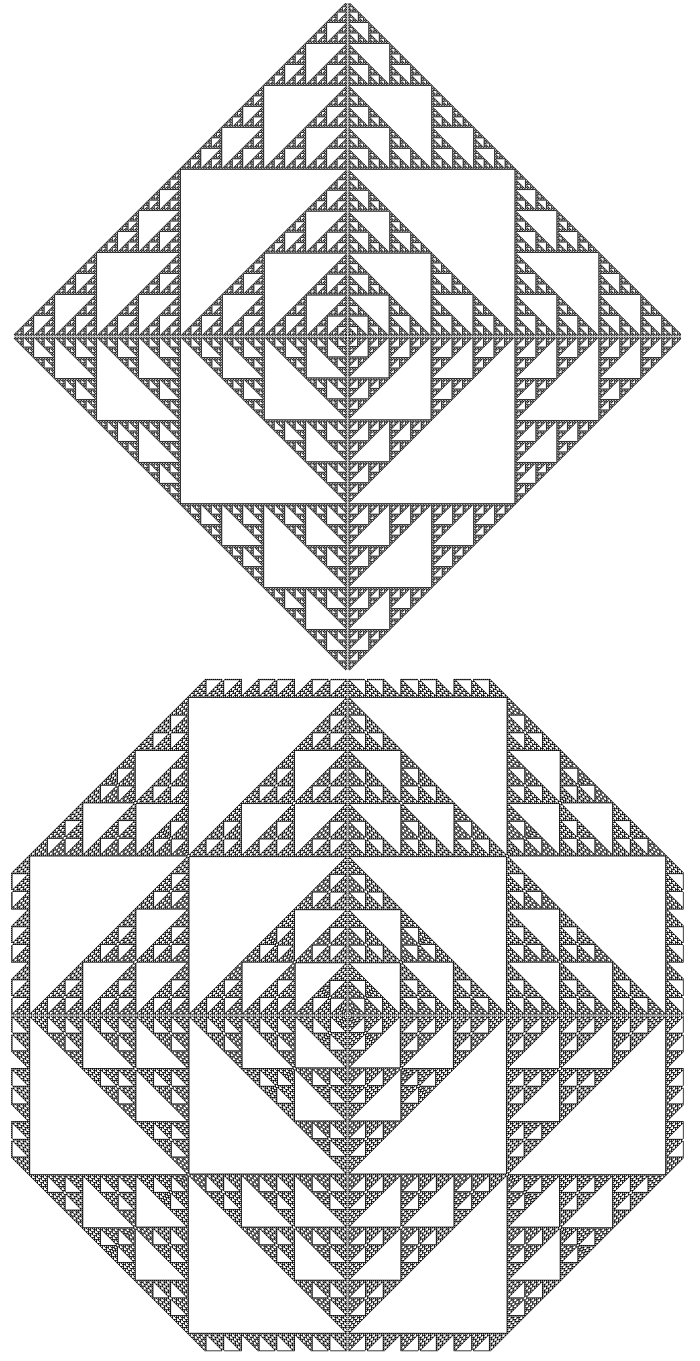A Second Level Sierpinski from A Pascal's Triangle Sum Modulo ProgramBy Roger BagulaCompiled and graphics by Paul Bourke 20 Aug 1998

I have been working on the connection between the number theory Pascal's triangle and the Sierpinski set generalizations I was worked out for along time. Last night in the middle of a very hot and uncomfortable night I had an idea. I programmed it up this morning. It works! I don't think anyone else has this. My generalized Pascal's sum triangles are based on the seed triangle:
1 Where a is a real number and the recurrence formula is: 1) n(i,j) = Mod(n(i,j - 1) + n(i - 1,j). int(a)) for array n(i,j). This procedure works better than the combination forms based on factorials and binomials because it is always a number that can be calculated with out computer floating point (scientific notation) chopping. I made up a pattern of eight of these to fill the screen symmetrically as a pretty test pattern. The program and one results is part of this article. I had the idea last night of starting with the seed:
1 And making the recurrence go one level deeper: 2) n(i,j) = Mod(n(i,j - 1) + n(i - 1,j) + n(i - 1,j - 1), int(a) + 1) The plus one on the modulo is what works experimentally. The result at a=2 is a Sierpinski carpet version of a Pascal's triangle. This idea is a real number generalization like the first one! I think that further Sierpinski level generalization equivalents are possible by adding recursive depth as I have done here. The first one that strikes me as symmetrical is: 2) n(i,j) = Mod(n(i,j - 1) + n(i - 1,j) + n(i - 1,j - 2) + n(i - 2,j - 1), b) where b would be an integer that works for a=2. These generalizations are real number generalizations of combination theory and represent fundamental orthogonal functional types. The relationship of binary address mapping and Self-similar Hadamard matrices to the Pascal's triangle have been in older articles in TFTN by me. The orthogonality of Hadamard transforms is a practical standard in modern electronics. What we are seeing in Sierpinski space functions is a generalization of orthogonality to a fractal level. Don't let it fool you that I use an experimental mathematics approach: the general application of this mathematics does not depend on who or what by what method the discovery is made. |